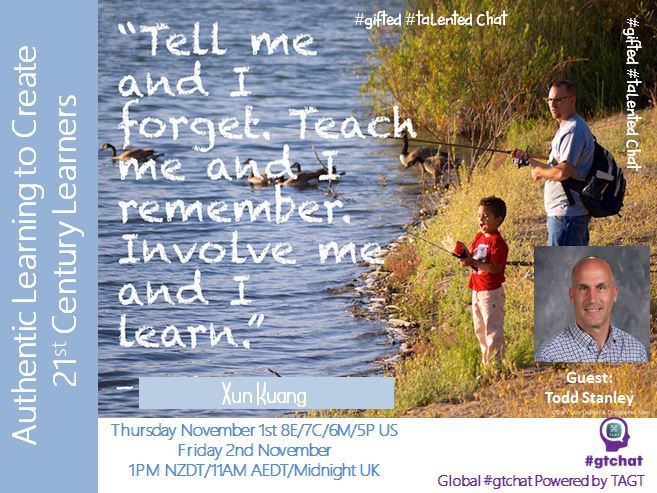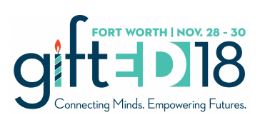43 participants and attendees from 22 states, D.C., and 5 countries joined us this week at Global #gtchat Powered by TAGT on Twitter to discuss disciplining smart kids!
So often, discipline is confused with punishment which should not be the intent. Discipline should serve as a teachable moment. Gifted children know when others are trying to control them. They will better appreciate attempts to show them alternative ways to behave.
Gifted children can be a challenge to discipline. They are astute observers of others’ behavior and are ready to apply that knowledge to their own situation. In most cases, gifted children are fully aware of how they should behave; but still are kids. Their knowledge base alone necessitates that their parent/teacher ‘be prepared’ to answer questions.
Asynchronous development – many ages at once – has a pronounced effect on behavior for gifted children. Maturity and intellect are often out of synch. Their ‘want to dos’ far exceed doing what is expected of them for their age. It is not something the gifted child may have control over and may not even recognize when they are younger; especially if they haven’t been identified yet. Asynchronous behavior can be a sign of giftedness; even before identification as gifted.
How can discipline issues in the classroom be prevented? Communication – honest and explicit statement of what is considered appropriate classroom behavior can go a long way in preventing discipline issues. Recognition and understanding of gifted characteristics can also head off inappropriate behavior in the classroom. Build a teacher-student relationship where the teacher can serve as mentor and role-model for their students.
Parents can reduce negative behaviors at home by providing a loving and caring atmosphere that values children as members of the family. They should build a relationship with their child built on honesty, respect for their opinions, and on quality time spent together. Parents can keep the lines of communication open and positive with school personnel and share concerns before an issue arises.
What are some strategies involved in using positive discipline? Strategies for positive discipline should include expressing clear expectations, involving their child in developing expectations, and taking the child’s feelings and abilities into consideration. Positive discipline should be about teaching behavioral skills, adults serving as role models, and remembering to express positive reinforcement whenever possible. The transcript may be read at Wakelet.

Global #gtchat Powered by the Texas Association for the Gifted and Talented is a weekly chat on Twitter. Join us Thursdays at 8E/7C/6M/5P in the U.S. and Fridays at 2PM NZST/Noon AEST/1 AM UK to discuss current topics in the gifted community and meet experts in the field. Transcripts of our weekly chats can be found at Wakelet. Our Facebook Page provides information on the chat and news and information regarding the gifted community. Also, checkout our Pinterest Page and Playlist on YouTube.
 About the author: Lisa Conrad is the Moderator of Global #gtchat Powered by TAGT and Social Media Manager of the Global #gtchat Community. She is a longtime advocate for gifted children and also blogs at Gifted Parenting Support. Lisa can be contacted at: gtchatmod@gmail.com
About the author: Lisa Conrad is the Moderator of Global #gtchat Powered by TAGT and Social Media Manager of the Global #gtchat Community. She is a longtime advocate for gifted children and also blogs at Gifted Parenting Support. Lisa can be contacted at: gtchatmod@gmail.com
Resources:
Discipline and the Gifted Child
Four Ways to Reduce Behavior Problems
How to Discipline your Gifted Child
Tips for Parents: Positive Discipline for Gifted Children
How to Not Argue with Your Gifted Child
Our Take on Positive Discipline: From Stickers and Star Charts to Dean’s List
Want to Have Your Heart Broken? Take a Close Look at an Angry Gifted Kid
Gentle Gifted Parenting Defusing Tantrums and Meltdowns with Love
Today’s Disruptors Can be Tomorrow’s Innovators
Photo courtesy of Pixabay CC0 Creative Commons
Graphic courtesy of Lisa Conrad.



